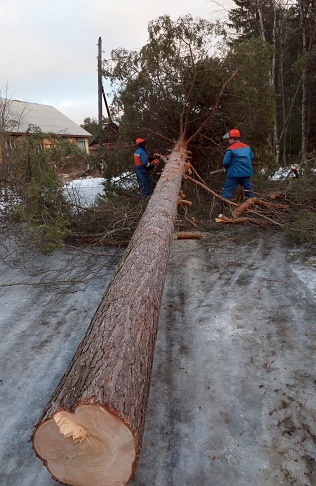 physical injury to the trunk and crown
physical injury to the trunk and crown- soil compaction in the root zone
- severing of roots
- smothering roots by adding soil
- split and broken branches
- new exposure to wind and sunlight
Inspection and Assessment
Because construction damage can affect the structure and stability of a tree, your arborist should check for potential hazards. A hazard check may involve a simple visual inspection, or instruments may be used to check for the presence of decay. If a hazard is found, sometimes it can be reduced or eliminated by removing an unsafe limb, pruning to reduce weight, or installing cables or braces to provide structural support. An often overlooked method of reducing hazards is to move objects that could be hit or to limit access to the hazardous area. If there is doubt about the structural integrity of a tree or the hazard cannot be adequately reduced, it should be removed. Although the goal is to preserve trees whenever possible, that goal must not supersede any question of safety.
Pre-construction care
Ideal, a tree protective plan is developed before construction begins. Many roots are destroyed when construction equipment pass over the root zone. Simply placing a barrier around the trunk of the tree does not protect most of the tree’s root system. Place tall, conspicuous stakes and fencing at the ends of the branches on the sides where trucks or bulldozers will be operating. Groups of trees usually stand a better chance of survival than individual specimens.
Changes in soil grade
Even a few inches of fill or soil removal can cause extensive root damage. If possible, never remove soil from or add large amounts of soil within the drip line. When soil air is decreased by filling, certain gases and chemicals increase and become toxic to roots. Symptoms may appear within months or years after filling has occurred.
Other problems could be roots covered by pavement and root damage from trenching.





